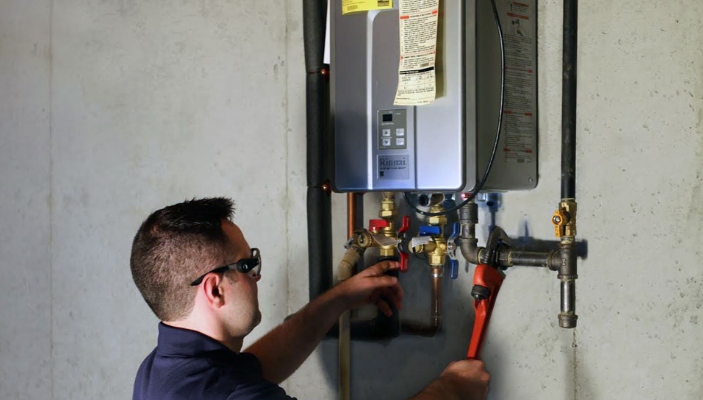How to Properly Maintain Your Home's Hot Water System
How to Properly Maintain Your Home's Hot Water System
Blog Article
Just how do you feel in relation to Tips For Maintaining Your Hot Water Heater?

Hot water is vital for day-to-day comfort, whether it's for a revitalizing shower or washing recipes. To ensure your hot water system runs successfully and lasts much longer, regular upkeep is vital. This post provides useful ideas and insights on how to preserve your home's warm water system to avoid interruptions and pricey repair work.
Introduction
Keeping your home's warm water system might seem complicated, but with a few straightforward actions, you can ensure it operates smoothly for many years ahead. This guide covers whatever from comprehending your warm water system to do it yourself upkeep tips and knowing when to employ specialist help.
Significance of Preserving Your Warm Water System
Normal upkeep not just expands the lifespan of your hot water system but also guarantees it operates effectively. Ignoring upkeep can bring about reduced performance, greater power costs, and also early failing of the system.
Indications Your Hot Water System Requirements Upkeep
Understanding when your hot water system needs interest can protect against significant concerns. Look out for indications such as irregular water temperature level, weird sounds from the heating unit, or rustic water.
Flushing the Water Heater
Flushing your water heater gets rid of debris buildup, boosting performance and extending its life.
Checking and Replacing Anode Rods
Anode rods avoid corrosion inside the tank. Evaluating and changing them when broken is vital.
Facility Problems Needing Professional Help
Examples include significant leakages, electrical problems, or if your hot water heater is constantly underperforming.
Routine Expert Maintenance Benefits
Specialist upkeep can include comprehensive inspections, tune-ups, and ensuring compliance with safety and security requirements.
Examining and Adjusting Temperature Level Settings
Adjusting the temperature level setups guarantees optimal efficiency and safety.
Do It Yourself Tips for Upkeep
You can perform numerous upkeep tasks on your own to keep your warm water system in leading condition.
Looking for Leaks
Routinely evaluate pipes and links for leaks, as these can bring about water damage and greater expenses.
Understanding Your Warm Water System
Before diving right into maintenance jobs, it's useful to recognize the fundamental parts of your warm water system. Generally, this consists of the water heater itself, pipelines, anode poles, and temperature controls.
Month-to-month Maintenance Tasks
Regular regular monthly checks can aid catch small issues prior to they rise.
Evaluating Pressure Relief Valves
Evaluating the stress relief valve guarantees it functions properly and protects against too much pressure accumulation.
Shielding Pipes
Protecting warm water pipes decreases heat loss and can save power.
When to Call a Professional
While DIY upkeep is beneficial, some problems call for professional experience.
Conclusion
Routine upkeep of your home's warm water system is important for effectiveness, long life, and cost savings. By adhering to these tips and knowing when to seek specialist aid, you can ensure a trusted supply of hot water without unexpected interruptions.
Water Heater Maintenance Tips
Test the TPR Valve
Shut off the power and the cold-water supply valve. Place a bucket under the pipe connected to the temperature-pressure-release (TPR) valve on the top or side of the tank. (This valve opens if the tank pressure gets too high.) Lift the valve’s tab to let some water out, then let go. If water keeps flowing, drain the tank partway, unscrew the old valve with a pipe wrench, and install a new one. Check the Anode Rod
Put a hose to the tank’s drain cock and let out a few gallons of water. Now fit a 1 1/16-inch socket onto the rod’s hex head on top of the heater (or under its top plate) and unscrew the rod. If it’s less than ½ inch thick or coated with calcium, buy a new one, wrap its threads with Teflon tape, put it back in the tank, and tighten securely. Use this segmented rod if headroom above the tank is limited. Drain the Tank and Wash Out Sediment
Drain the remaining water in the tank into the bucket, then stir up the sediment on the tank’s bottom by briefly opening the cold-water supply valve. Drain and repeat until clean water comes out of the hose. Close the drain cock, refill the tank, and turn its power back on. Adjust the Temperature
Find the temperature dial on the side of the tank and unscrew its cover. Adjust the dial to 120 degrees using a flathead screwdriver. For every 10 degrees the temperature is lowered, you can expect to save up to 5 percent in energy costs. Turn the water heater off or the thermostat down to its lowest setting if you plan to be away from home for more than three days. Insulate the Pipes
Buy some self-sticking 3/8-inch-thick foam pipe insulation that matches the pipes’ diameter. Slide the foam over the hot-and cold-water pipes as far as you can reach. Insulating the cold-water pipe prevents condensation in summer. Peel the tape and squeeze the insulation closed. If the pipe is 6 inches or less from the flue, cover it with 1-inch-thick unfaced fiberglass pipe wrap. https://www.thisoldhouse.com/plumbing/21016402/how-to-maintain-a-water-heater

I found that write up on How to Maintain Your Water Heater & Prolong its Life when doing a search on the internet. You should take the time to share this content if you enjoyed it. I cherish reading our article about How to Maintain a Hot Water Heater in a Few Simple Steps.
Schedule A Service Report this page